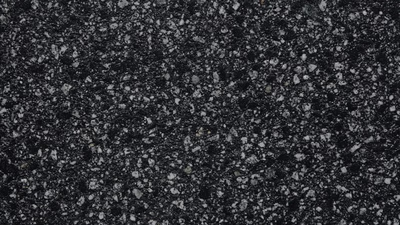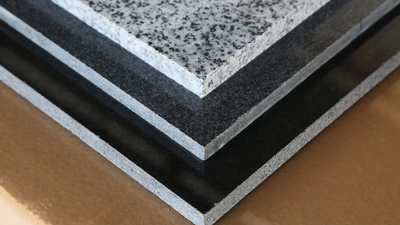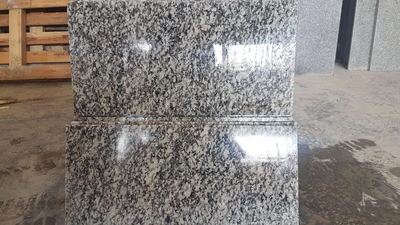
Granite stone showcases durability and aesthetic appeal in construction.
Granite is a type of igneous rock that is composed primarily of quartz, feldspar, and mica minerals. It is an intrusive rock, meaning it forms from the slow cooling of magma beneath the Earth's surface. The formation of granite typically occurs deep within the Earth's crust, where molten rock, or magma, slowly cools and solidifies over millions of years. Granite is known for its coarse-grained texture, which is a result of its slow cooling process. The individual minerals within the rock are usually visible to the naked eye and give granite its speckled appearance. The most common minerals found in granite are quartz, which gives the rock its hardness and durability, feldspar, which provides its characteristic colors such as pink, gray, or white, and mica, which imparts a shimmering effect.
Granite is commonly used as a building material in construction. Its hardness, durability, and resistance to weathering make it suitable for a wide range of applications, including countertops, flooring, wall cladding, stairs, and exterior facades. Granite adds an aesthetic appeal to buildings and is often chosen for its natural beauty and variety of colors. Granite is sometimes used as a structural component in construction projects. Large granite blocks or slabs can be used as load-bearing elements in foundations, retaining walls, and bridge piers. Its strength and ability to withstand heavy loads make it suitable for such applications.
One of the defining features of granite is its hardness and durability. It is one of the hardest natural stones, making it highly resistant to scratches and abrasion. This durability, along with its aesthetic appeal and variety of colors, has made granite a popular choice for a wide range of applications, including countertops, flooring, wall cladding, monuments, and decorative stones. Granite is quarried from large granite deposits located in various parts of the world. It is then cut into slabs or tiles, polished, and used in construction and design projects. The unique combination of its beauty, strength, and versatility has made granite a widely sought-after material in both residential and commercial applications.
Granite is an example of very hard and durable stones and has high polishing ability. Granite stones are found in red, black, brown, chocolate, pink, blue and green. Their grain size is large and visible to the naked eye. The resistance of this product is higher than different types of marble and travertine, and its polished and shiny surface is more preserved. This material is the most common building stone that is widely used in the construction industry and it is used for paving, washbasins and stairs. Granite is the best choice for building stairs; because the stairs are worn and polluted due to heavy traffic, so stone such as granite should be used for them; because they are very durable and durable.
Granite is widely used for the construction of monuments, memorials, and statues. Its durability and ability to retain its appearance over time make it an ideal choice for creating lasting tributes. Granite is also used in decorative elements such as columns, balustrades, and ornamental facades, enhancing the visual appeal of buildings. Granite finds application in infrastructure projects such as road construction and paving. Crushed granite is commonly used as an aggregate in the production of asphalt and concrete. It provides strength, stability, and resistance to wear and tear, making it suitable for road surfaces and other infrastructure applications.
-

Granite, while known for its durability, has several disadvantages that can impact its use in construction and design. It is susceptible to cracks from extreme temperature changes or improper installation, necessitating careful handling and adherence to installation guidelines. The material"s design flexibility is limited compared to alternatives like engineered stone, making intricate designs challenging and potentially wasteful. Additionally, granite can be expensive due to extraction, transportation, and installation costs, which vary based on quality and rarity. Its heavy weight requires structural support during installation, complicating the process further. Unique varieties may be hard to source, affecting availability and pricing. Although granite"s natural variations in color are often seen as attractive, they can pose challenges for projects requiring uniformity. The stone is also porous and needs regular sealing to prevent staining from liquids.
Maintenance involves routine cleaning and periodic resealing to maintain its appearance. Professional installation is typically required due to granite"s weight and specific handling needs, adding to project costs. Finding large slabs without seams can be difficult, impacting aesthetic appeal. Furthermore, granite surfaces can feel cold and hard to the touch, which may not be comfortable for all users. Lastly, the environmental impact of granite extraction raises sustainability concerns; however, the industry is moving towards more responsible practices. "
-

West Asian granites, sourced from countries like Saudi Arabia, Iran, Turkey, and Egypt, showcase a diverse range of colors and patterns due to the region"s geological diversity. Common hues include beige, brown, gray, and pink, offering numerous design possibilities for architectural applications. The abundance of granite resources in the Middle East eliminates the need for imports and provides a cost-effective option for builders. Known for their durability and longevity, these granites resist wear, weathering, and chemical exposure. They are suitable for various uses including flooring, countertops, and decorative elements in both residential and commercial spaces. Additionally, West Asian granites are compatible with materials like steel and wood, enhancing their versatility in design. Their heat resistance makes them ideal for kitchen surfaces while their non-porous nature ensures high resistance to water penetration. The cultural significance of these granites is evident as they are often used in historical monuments and important structures throughout the region.
With an increasing focus on sustainability, quarrying practices are evolving to minimize environmental impacts while promoting responsible resource management. "
-

Granite is a versatile material widely used in both residential and commercial applications due to its durability, aesthetic appeal, and resistance to heat and scratches. Commonly found in kitchen countertops and bathroom vanities, granite also serves as flooring in high-traffic areas, wall cladding for interiors and exteriors, and facades for buildings. Its longevity makes it suitable for monuments and gravestones. The granite industry has ancient roots, with major exporters including China, India, Brazil, and Italy. The stone"s unique properties stem from its formation process, where molten rock cools slowly to create large mineral grains. Granite"s applications extend to landscaping features like pathways and patios, as well as infrastructure projects such as bridges due to its strength. Additionally, it is used in interior design elements like fireplace surrounds and furniture pieces due to its variety of colors and patterns. Industrial uses include machinery bases and laboratory countertops where durability is essential.
-

Granite is an igneous rock primarily composed of quartz, feldspar, and mica. Formed from the slow cooling of magma beneath the Earth"s surface, granite exhibits a coarse-grained texture with visible minerals that contribute to its speckled appearance. Its hardness and durability make it a favored building material for various applications, including countertops, flooring, wall cladding, and monuments. Granite"s aesthetic appeal is enhanced by its range of colors such as pink, gray, and black. It is also utilized structurally in foundations and retaining walls due to its strength. The stone"s resistance to scratches and weathering further solidifies its popularity in both residential and commercial construction projects. Granite is quarried globally, cut into slabs or tiles, polished for use in design projects, and serves as a crucial component in infrastructure like road construction. Crushed granite is often used as an aggregate in asphalt and concrete production due to its stability and wear resistance. "




